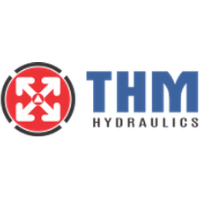Load Sensing Proportioning Valve Adjustment: Key To Hydraulic System Efficiency
In modern hydraulic systems, load sensing proportioning valves are essential components that regulate fluid flow and pressure according to the actual demands of a system. Unlike traditional valves that maintain fixed outputs, these valves continuously adjust to the pressure needs of various actuators. This ensures that each function receives precisely the amount of pressure and flow required, making operations more efficient and responsive.

Proper load sensing proportioning valve adjustment plays a crucial role in system performance. Incorrect settings can cause sluggish machine behavior, overheating, or premature component wear. When adjusted accurately, however, these valves help increase fuel or energy efficiency, provide faster and smoother actuator responses, extend the lifespan of hydraulic components, and improve overall safety and system balance.
These valves work by monitoring the pressure at the actuator and relaying it back to the pump, which then alters its output to match the real-time requirements. This feedback loop reduces energy waste and avoids overloading. Many valves feature adjustable compensators or spools, which allow for fine-tuning based on the application's dynamic needs.
You'll find load sensing valves widely used in precision-demanding industries such as agriculture (tractors, harvesters), mobile construction equipment (excavators, loaders), material handling systems, and industrial automation setups. In these environments, proper valve adjustment can dramatically improve operational smoothness and reduce energy costs.
When it comes to adjustment, a few best practices can make a significant difference. First, understand the specific load and pressure needs of each function in your system. Always use calibrated tools for accuracy and begin adjustments based on manufacturer guidelines. Make small, incremental changes and monitor the system's feedback using pressure gauges or built-in sensors. Pairing adjustments with linear position sensors allows for even greater control and precision.
As smart hydraulic systems become the norm, load sensing valves are increasingly integrated with digital controls and servo motor hydraulic pumps or electric hydraulic valves. These systems learn operational patterns and make proactive adjustments, enhancing performance and reducing downtime through predictive maintenance capabilities.
Regular maintenance remains essential. This includes inspecting valve bodies for wear, cleaning filters, recalibrating settings after equipment upgrades, and using clean, high-quality hydraulic fluid. Neglecting these steps can lead to erratic system behavior and potential failure.
Conclusion
mastering load sensing proportioning valve adjustment isn’t just a technical detail—it’s a smart strategy for maximizing your hydraulic system's performance, reliability, and efficiency. Whether you're managing an industrial plant or operating mobile machinery, precision adjustment helps ensure optimal output and long-term savings.
Need expert support with load sensing valve setup or optimization? Our team is here to help you fine-tune your system for peak efficiency.
